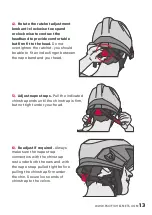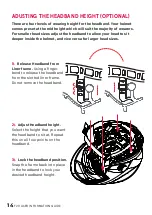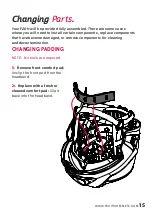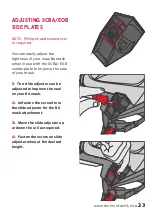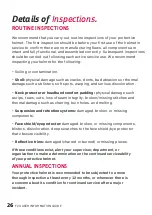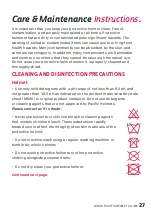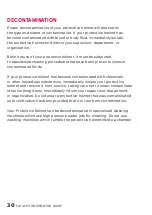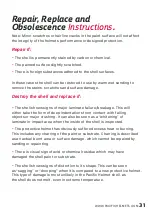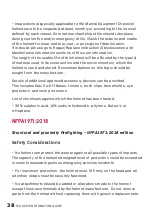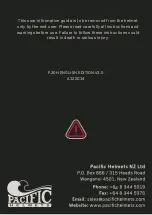
Details of
Inspections
.
ROUTINE INSPECTIONS
-
Soiling or contamination.
-
Shell:
physical damage such as cracks, dents, bad abrasions or thermal
damage such as blisters, soft spots, warping, and serious discoloration.
-
Neck protector or headband comfort padding:
physical damage such
as rips, tears, cuts, loss of seam integrity, broken/missing stitches and
thermal damage such as charring, burn holes, and melting.
-
Suspension and retention systems:
damaged, broken, or missing
components.
-
Face shield/eye protector:
damaged, broken, or missing components,
blisters, discoloration, deep scratches to the face shield/eye protector
that obscure visibility.
-
Reflective trims:
damaged (charred or burned) or missing pieces.
If these conditions exist, alert your supervisor, department, or
organization to make a determination on the continued serviceability
of your protective helmet.
ANNUAL INSPECTIONS
Your protective helmet is recommended to be subjected to a more
thorough inspection at least every 12 months, or whenever there is
a concern about its condition for continued service after a major
incident.
26
F20 USER INFORMATION GUIDE
We recommend that you carry out routine inspections of your protective
helmet. The first inspection should be before your first use of the helmet in
service to confirm there are no manufacturing flaws, all components are
intact and fully functional, and assembled correctly. Subsequent inspections
should be carried out following each active service use. We recommend
inspecting your helmet for the following:
Содержание HALOFLEX F20H
Страница 1: ...S T R U C T U R A L F I R E F I G H T I N G H E L M E T User Information Guide...
Страница 2: ......


